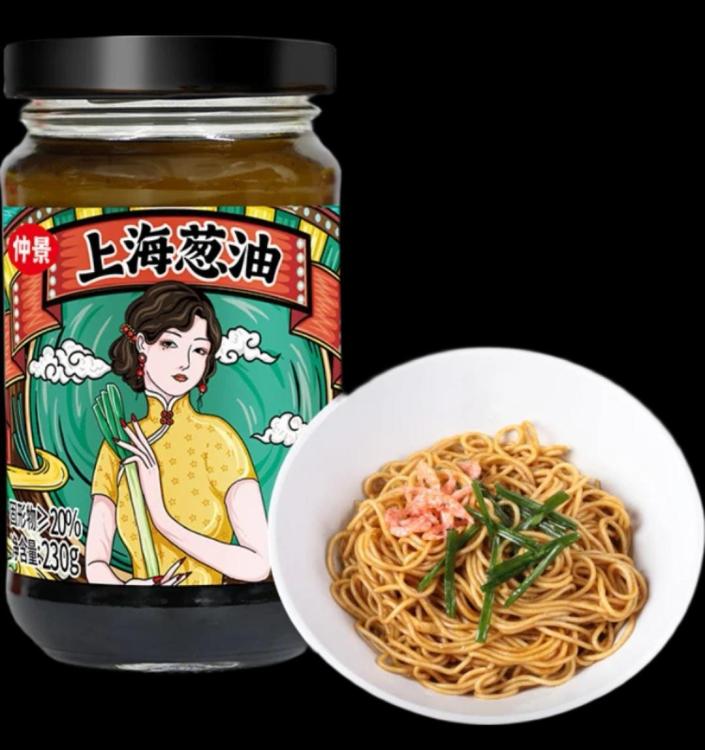This is a handy thing to have in the store cupboard / fridge, although I prefer to make it myself. It's easy.
上海葱油 (shàng hǎi cōng yóu), Shanghai scallion oil.
There are other scallion oils, especially the popular Cantonese version, maybe the only thing where I prefer the Cantonese version to others.
The Shanghai version includes too many unnecessary ingredients for me. Besides the obvious oil and scallions, it has soy sauce, oyster sauce, salt and sugar. But then, Shanghai is known for its love of soy sauce and sweet flavours.
The classic Cantonese version is simply oil and scallions. It is similar to the Vietnamese version, mỡ hành. Here is a recipe from inactive eG member Carolyn Philips, author of All Under Heaven (eG-friendly Amazon.com link).
And here is a recipe for the Vietnamese version. As you will see it's almost identical.
What to do with it? Add it to to noodles, fried rice, salads, stir fries. It makes be a garnish for all kinds of savoury dishes, Asian or not.




